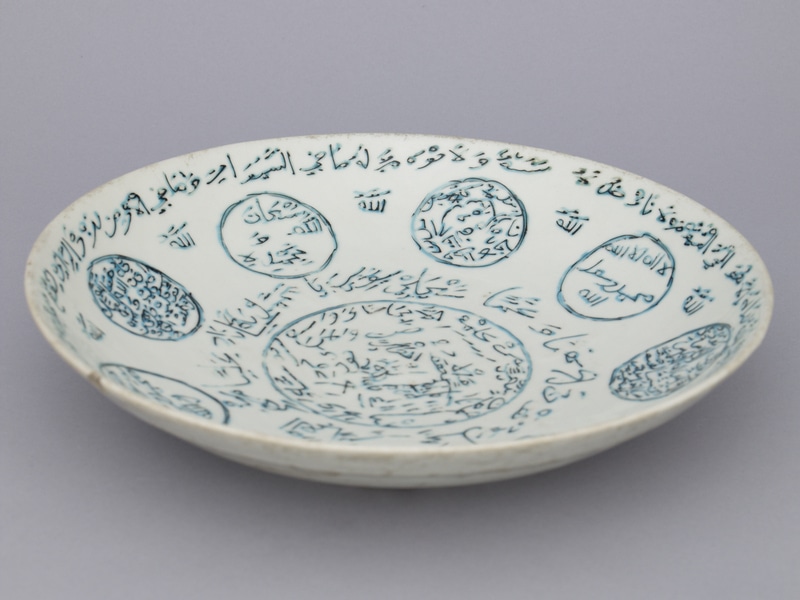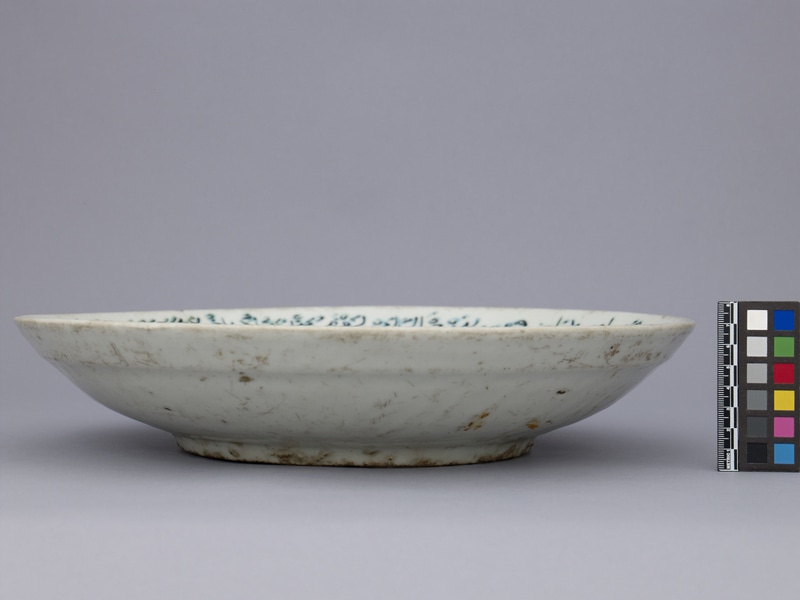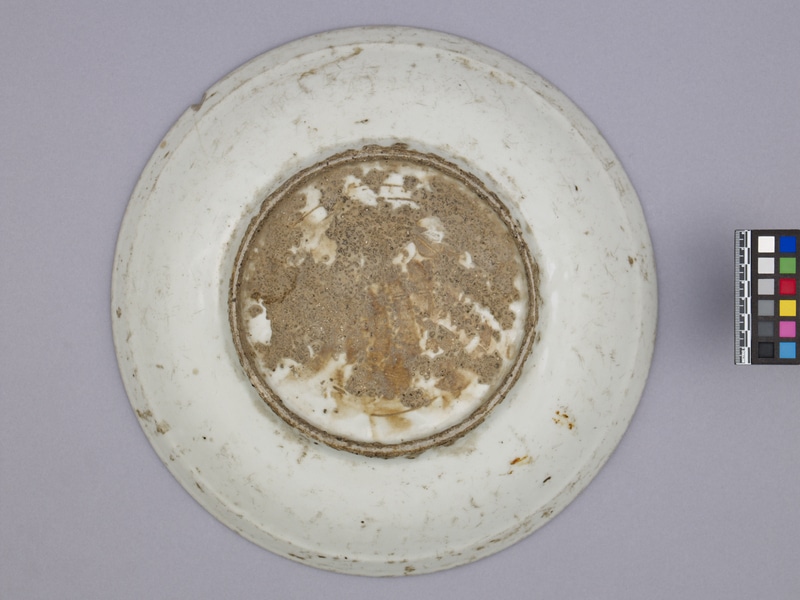Dish Item Number: 2988/2 from the MOA: University of British Columbia




Description
Large dish with sloping sides and a slanting foot ring, is almost solely decorated in turquoise blue enamel combined with outlines in black on a thick, opaque white glaze. It is painted in the centre with a large roundel enclosing an Arabic inscription written with the characters forming a spiral, and encircled by double lines. The gently curving cavetto has eight smaller roundels enclosing Arabic inscriptions, alternating with individual words; there are also continuous Arabic inscriptions surround the large central roundel and the rim. The underside is glazed but undecorated.
History Of Use
Coarsely potted and glazed dishes like this belong to a group of Chinese export porcelain known as “Swatow ware” or “Zhangzhou ware.” The name Swatow derives from Shantou, a coastal town in Guangdong Province where these wares were allegedly shipped, but recent archaeological research has proved such wares were actually made in Zhangzhou, Fujian Province. Mass-produced in the late Ming dynasty (circa 1550–1644), they were exported to Japan, Europe, and especially Southeast Asia. Dishes like this, finely decorated with Arabic inscriptions, are commonly found in Indonesia and are thought to have been ordered from China by the Sultans of Aceh in the northwest of Sumatra in the 17th century. Under the reign of Sultan Iskandar Muda (1607-36), Aceh became the most powerful Islamic kingdom in Southeast Asia, and the capital Kutaradja (present day Banda Aceh) was a centre of trade and learning. The inscriptions are all written in cursive Arabic script, and include invocations to Allah, verses from the Qur’an, including the Throne verse from Surah al-Baqarah (Chapter 2, verse 255), Surah al-Ikhlas (Chapter 112, verses 1-4) and Surah al-Nas (Chapter 114, verses 1-6), the Shahadah, and the Nad-i ‘Ali prayer; the word ‘Allah’ is repeated in between the eight roundels along the cavetto of the dish. A similar nine-fold medallion design is found in the seals of the Sultans of Aceh.
Narrative
Other similar dishes of this type are in the Museum Pusat, Jakarta, Indonesia, the Museum and Art Gallery of the Northern Territory, Darwin, Australia and the Aga Khan Museum in Toronto.
Item History
- Made in Zhangzhou, Fujian, China between 1600 and 1700
- Owned by His Highness Prince Aga Khan Shia Imami Ismaili Council for Canada before January 2, 2013
- Received from His Highness Prince Aga Khan Shia Imami Ismaili Council for Canada (Donor) on January 2, 2013
What
Who
- Culture
- Indonesian ?
- Previous Owner
- His Highness Prince Aga Khan Shia Imami Ismaili Council for Canada
- Received from
- His Highness Prince Aga Khan Shia Imami Ismaili Council for Canada (Donor)
Where
- Holding Institution
- MOA: University of British Columbia
- Made in
- Zhangzhou, Fujian, China
When
- Creation Date
- between 1600 and 1700
- Ownership Date
- before January 2, 2013
- Acquisition Date
- on January 2, 2013
Other
- Item Classes
- ceramics
- Condition
- fair
- Current Location
- Case 73
- Accession Number
- 2988/0002